The IT giant has played a leading role in transforming business, science and society in these 100 years.
From investing in a research lab during the Great Depression, to developing the first hard disk drive that created the data storage industry, to working with the US government to develop the social security system, IBM made rapid technological strides.
It continued with such "big bets" as a radical new computing model, the System/360 mainframe, the invention of the UPC code, the invention of the IBM Personal Computer that launched the PC revolution, and the recent development of Watson, the computer that triumphed on the TV game show Jeopardy!
IBM chairman and CEO Samuel J Palmisano says the key lesson IBM has learned over 100 years is, "In order to succeed for the long term, you must manage for the long term. For IBMers, long-term thinking means continually moving to the future.
"It has been an exciting journey for IBM in India. Starting with just a small office, we have grown to become a microcosm of the IBM Corporation with presence and leadership across all segments. We will take forward this legacy of innovation and growth and continue to contribute to the economy and society in India," Shankar Annaswamy, managing director, IBM India said.
Photographs, courtesy: IBM
. . .
IBM turns 100! Here are its icons of progress
Image: IBM headquarters.Over 50 per cent of the employees will pledge a minimum of 8 hours of voluntary service each and work with over 100 NGOs engaged in different community programs.
IBM will provide grants worth $12 million to support the 'Celebration of Service' globally, with a part of this grant being given in India as well.
IBM @ 100
Revenue: $99.9 billion
Net income: $14.8 billion
Total assets: $113.5 billion
Number of employees (worldwide): 426,751
on IBM's icons of progress...
IBM turns 100! Here are its icons of progress
Image: IBM wins US National Medal of Technology.In 1911, international businessman Charles Flint engineered the merger of Hollerith's Tabulating Machine Company with two other firms - the Computing Scale Company of America, an Ohio manufacturer of meat slicers and scales, and the International Time Recording Company, a maker of industrial clocks.
This new conglomerate was named Computing-Tabulating-Recording Company, and it bore the seeds of what would become IBM.
Ten years later, with revenues of $11 million or roughly 13 times its original annual sales, 3,384 employees and a strong vision for the future, C-T-R changed its name to International Business Machines.
. . .
IBM turns 100! Here are its icons of progress
Image: IBM for voluntary community work.The IBM On Demand Community was established in 2003 as an online system for IBM employees and retirees to formalize their participation in volunteerism.
3. Smarter Planet
Launched in 2008, Smarter Planet is IBM's latest "big bet" on the future, with wide-ranging possibilities for improving the transportation, education, energy, food and water systems that run our everyday work and personal lives.
4. The Globally Integrated Enterprise
A globally integrated enterprise is truly global -locating operations and functions anywhere in the world, based on the right cost, availability of skills and supportive business environment.
. . .
IBM turns 100! Here are its icons of progress
Image: Cristina Andrade helps students in Rio de Janerio, Brazil.IBM PROFS (Professional Office System) was released in 1981 as a platform for virtual communication supporting email, document management, scheduling and spreadsheets. It was the predecessor of modern corporate intranets like IBM's w3.
6. The Automation of Personal Banking
The check-clearing process in banking was dramatically enhanced with the introduction of the IBM 801 Bank Proof machine, unveiled in 1934.
7. The Social Security System
When Franklin D. Roosevelt signed the Social Security Act, it created a gigantic, nationwide information problem. The government needed acres of accounting machines. The company provided more than 400 punch card tabulating machines to establish records for 26 million workers.
. . .
IBM turns 100! Here are its icons of progress
Image: Environmental Analytics Sensors for Buildings.IBM's DNA Transistor offers a high-tech, low-cost method for reading the human genome sequence.
9. Corporate Leadership in Environmental Responsibility
IBM's environmental programs date back to 1971. By the late 1990s, IBM became the first enterprise to achieve a single global registration covering IBM's global operations to the ISO 14001 Environmental Management System Standard.
10. The Origins of Computer Science
At the end of World War II, the Watson Scientific Computing Laboratory at Columbia University became a pioneering powerhouse, marrying academics with corporate research and development.
IBM turns 100! Here are its icons of progress
Image: IBM has big plans.The seeds of IBM's involvement in space exploration were planted when Thomas J. Watson established an Astronomical Computing Bureau at Columbia University in the 1930s -decades before NASA was founded.
IBM has taken part in every US manned space effort.
12. Fractal Geometry
In 1967, IBM researcher Beno t Mandelbrot published the initial findings of what he would later describe as "fractal geometry"- a concept by which mankind could use mathematical properties to describe the rough, non-Euclidean geometrical irregularities that exist in nature.
IBM turns 100! Here are its icons of progress
Image: Silicon Germanium Chips.In 1994, IBM Research patented a method for making low-cost semiconductor chips from Silicon Germanium (SiGe). Today, SiGe technology powers a new generation of mobile devices and smart technology.
14. Magnetic Tape Storage
In 1952, IBM announced the first magnetic tape storage unit, the IBM 726.
IBM turns 100! Here are its icons of progress
Image: IBM Chairman and CEO Samuel Palmisano (center) and IBM executives ring The Opening Bell at the NYSE.Just as IBM in the 1940s helped create the academic discipline of computer science, so the company is again extending scientific rigor to key emerging dimensions of a changing world. Since 2003, IBM has worked with 450 university faculties in 54 countries, as well as governments and industry leaders, to build SSME curricula.
16. Pioneering machine-aided translation
IBM developed its first translation system for the League of Nations in 1931. The system was based upon the 1927 Filene-Finlay patent and enabled speech to be translated and read at the same time using low-power radio and headphones.
IBM turns 100! Here are its icons of progress
Image: Samuel Palmisano Teaching in Baltimore.Throughout his tenure as CEO and President of IBM, Thomas J. Watson Sr. maintained a deep interest in international relations. It was under his reign that the company became truly multinational, aggressively expanding operations to Asia, Latin America and Africa. In 1949, Watson created the IBM World Trade Corporation, a wholly owned subsidiary, to manage these proliferating operations.
18. IGF financing technical innovation
IBM Global Financing (IGF) enables the world's leading corporations to implement critical e-business solutions, by offering total solutions financing.
19. Smarter healthcare management
IBM is working with a variety of industry stakeholders to drive the digitisation of records, a critical step in improving patient care.
IBM turns 100! Here are its icons of progress
Image: IBM Blue Gene.The IBM computer built for the "Roadrunner project" at Los Alamos National Lab in 2008 was the first in the world to operate at speeds faster than one quadrillion calculations per second -one petaflop. The world's first "hybrid" supercomputer (using two different processor architectures), Roadrunner is twice as energy-efficient as the next computer.
21. E-business
As booming dot-com start-ups brought electronic commerce to consumers, big companies looked on wondering what to do. In the late 1990s, IBM offered a helping hand by recognizing the trend and using its strengths in mainframes, transactions and networking to create a strategy called "e-business."
IBM turns 100! Here are its icons of progress
Image: IBM office at Argentina.IBM has a long history of using emerging technology to help energy companies find, extract, process and use oil.
23. High-temperature superconductors
Superconductors made MRI machines cheaper and faster, helping them spread to hospitals around the world. High-speed rail travel even relies on superconductors. In 1987, Georg Bednorz and Alex M ller were awarded the Nobel prize for their discovery.
24. The management of transportation flow
The city of Stockholm, Sweden, had a traffic congestion problem. To spur less car use there, IBM developed a road charging system that would directly charge drivers who used city center roads during peak business hours.
IBM turns 100! Here are its icons of progress
Image: CNP Smart Meters.IBM researcher Lloyd Treinish developed a hyper-local weather forecasting capability that combined algorithms, computer modeling and visualization to predict short-range, very local weather.
26. WebSphere
The WebSphere suite of products and services helps businesses set up, operate and integrate electronic applications across multiple computing platforms.
27. Tracking infectious diseases
In 1976, the World Health Organization utilized the IBM System/370 at the United Nations' International Computing Center in Geneva to precisely map trends and outbreaks of smallpox so that it could best allocate its limited personnel and resources to the most urgent locations.
IBM turns 100! Here are its icons of progress
Image: IBM presented its first large-scale calculator, the ASCC, to Harvard University.IBM helped the world's enterprises learn the field of data processing. Management Information Systems proliferated, and with them a new executive role-the Chief Information Officer.
29. IBM 603: The first commercial electronic calculator
The first electronic calculator ever placed into production, the IBM 603, was the first commercial product to incorporate electronic arithmetic circuits.
30. World Community Grid
IBM's World Community Grid, released in 2004, makes use of pervasive networking and crowdsourcing to apply supercomputer levels of processing power to urgent healthcare and societal needs.
IBM turns 100! Here are its icons of progress
Image: IBM office.IBM has historically taken an intellectual approach to its hiring process, being truly blind to human traits beyond expertise and character. Its diversity initiatives reflect this thinking and have helped redefine the workplace.
32. The IBM 700 Series
The 1950s brought challenges for IBM, the undisputed leader in data processing.
To stay ahead of the Soviet Union, the US government began helping 14 organizations to develop electronic computers. In response, IBM created the 701 in 1951, its first commercial computer.
IBM turns 100! Here are its icons of progress
Image: 100 years of innovation.In 2009, IBM and the Marine Institute in Ireland completed the SmartBay pilot information system.
34. Predictive Crime Fighting
For several generations IBM has partnered with local governments and police operations to provide technology that aids law enforcement and security.
35. The Selectric Typewriter
The typewriter industry changed forever with the invention of the IBM Selectric typewriter in 1961.
IBM Selectric became the most successful electric typewriter model ever made, dominating the high-end office typewriter market for 25 years.
IBM turns 100! Here are its icons of progress
Image: An ecosystem for entrepreneurs.IBM's 2006 Innovation Jam was the largest IBM online brainstorming session ever held. IBM brought together more than 150,000 employees, clients, and constituents from 104 countries and 67 companies. As a result, ten new IBM businesses were launched around innovations.
37. Linux: The era of open innovation
IBM's decision to support Linux brought the power of open source innovation to IBM servers, systems and solutions. In 2000, IBM announced it would invest $1 billion in Linux, with a concerted focus on improving the operating system from within the Linux community.
IBM turns 100! Here are its icons of progress
Image: Thomas Watson, founder, IBM.With THINK as the mantra, Thomas Watson Sr created a culture of independent thinkers and impassioned sellers, empowering a large, dispersed workforce.
39. The making of International Business Machines
Inspired by broad company names like General Electric and General Motors, Watson changed C-T-R's name to International Business Machines, emphasizing its global aspirations. Today IBM operates in over 170 countries.
IBM turns 100! Here are its icons of progress
Image: IBM opens its greenest data centre in North America.In 1941, IBM hired a legally blind employee, psychologist Dr. Michael Supa, to assist in the hiring of 181 people with disabilities over the following two years.
IBM has pioneered a number of technology solutions that enhance accessibility, such as the Home Page Reader, an early Braille printer and speech recognition technology.
41. Good design is good business
From aesthetic to function, design reflected IBM's true corporate mission to use advanced technology to improve the way people live and do business.
IBM turns 100! Here are its icons of progress
Image: Blue Gene.On August 12, 1981, IBM Personal Computer (IBM 5150) was launched with a price tag of $1,565. The IBM PC helped revolutionize the way the world does business. One year later, it earned Time magazine's "Person of the Year" award.
43. Blue Gene
Tthe Blue Gene series revolutionised the economics of supercomputing.
44. FORTRAN: The pioneering programming language
Programming early computers meant using an arcane "machine code" specific to each computer. IBM programmer John Backus found a better solution. In 1957, he and his team produced the first high-level language, FORTRAN (for FORmula TRANslating System).
IBM turns 100! Here are its icons of progress
Image: Shaping the world.IBM has gained tremendous knowledge of genetic variation and has become the world's first company with a genetic non-discrimination policy.
46. Sabre: The first online reservation system
Sabre paved the way for real-time online transactions-also known as Online Transaction Processing (OLTP) - a precursor of everything from ATM machines to Internet commerce.
47. Corporate Service Corps (CSC)
The IBM Corporate Service Corps (CSC) program was launched in 2008 to create leadership development opportunities for IBMers while delivering expertise-based service for the communities and organizations in emerging markets.
IBM turns 100! Here are its icons of progress
Image: IBM punched cards, a big success.From the 1950s through about 1970, IBM punched cards were the primary way corporations and governments stored and accessed information, making the cards the most durable, successful data storage medium since the book.
49. The first corporate pure science research laboratory
Today, eight IBM labs work with government and university research labs worldwide. This new model of "collaboratories" allows the company to stretch its budget and access some of the best minds on the planet.
50. DRAM: The invention of on-demand data
DRAM instantly made computer memory smaller, denser and cheaper, all while requiring less power.
IBM turns 100! Here are its icons of progress
Image: Heinrich Rohrer and Gerd Binnig.IBM pioneered the measurement of academic performance with 1937's IBM 805 Test Scoring Machine. This machine was able to score tests in less time than it took to manually mark the answer sheet, and was many times more accurate.
52. Scanning tunneling microscope
The scanning tunneling microscope (STM) revolutionized IBM's ability to manipulate solid surfaces the size of atoms. Gerd Binnig and Heinrich Rohrer of IBM's Zurich Research Center were awarded the 1986 Nobel Prize in Physics for discovering the STM.
IBM turns 100! Here are its icons of progress
Image: IBM's computer Watson.Few products in history have had the massive impact that the IBM System/360 has had - on technology, on the way the world works, or on the organization that created them. The System/360 ushered in the era of computer compatibility.
54. The optimisation of global railways
IBM's first customer in Italy, the Italian state-owned Ferrovie dello Stato (Italian Railways) turned to IBM in 1928 to automate its administrative processes.
55. A Computer called watson
IBM's computer, code-named "Watson" leverages leading-edge Question-Answering technology, allowing the computer to process and understand natural language.
IBM turns 100! Here are its icons of progress
Image: RAMAC.56. The rise of the Internet
In 1987, IBM, working with the U.S. National Science Foundation and our partners at MCI and Merit designed a new high-speed National Science Foundation Network (NSFNET) to connect US universities and 6 US-based supercomputer centers.
57. RAMAC: The first magnetic hard disk
The world's first hard disk drive was the size of two kitchen refrigerators set side by side. It contained 50 disks spinning at 1,200 revolutions per minute, supplying data at 100,000 bits per second.
58. Excimer Laser Surgery
In 1981, three IBM scientists - Rangaswamy Srinivasan, James Wynne and Samuel Blum -discovered how the newly invented excimer laser could remove specific human tissue without harming the surrounding area and do so on an extremely minute scale - a process that became the foundation for LASIK and PRK surgery.
IBM turns 100! Here are its icons of progress
Image: IBM labs developed the magnetic strips on credit cards in 1969.In 1969, IBM engineer Forrest Parry founded the magnetic stripe. It accelerated the proliferation of credit card usage around the world, transforming commerce forever.
60. The First Salaried Workforce
Thomas Watson Sr. always believed in making his workers feel dignified. In 1934, he bucked a trend toward paying factory workers in piecework, instead paying by the hour.
Continuing the tradition, in 1958 IBM became the first industrial organization to place all regular, hourly-rated domestic employees on a salary basis.
61. Optimizing the food supply
IBM worked with the Danish government in 1988 to create a nationwide cattle registry.
IBM turns 100! Here are its icons of progress
Image: The First National Air Defense Network.The IBM engineers who developed the floppy disk never could have dreamed that it would soon become instilled in the fabric of consumers' lives. Usable, durable and flexible, the floppy disk quickly became ubiquitous as the preferred storage medium for the emerging personal computer industry.
63. SAGE: The First National Air Defense Network
In the depths of the cold war, IBM was contracted to help safeguard the United States by building an air defense system known as the Semi-Automatic Ground Environment (SAGE).
IBM turns 100! Here are its icons of progress
Image: IBM Mainframe at the Senegal Ministry of Finance.In 1959, IBM introduced the 1401, the first high-volume, stored-program, core-memory transistorized mainframe computer.
65. UPC: The transformation of retail
The UPC barcode system came into being as the result of one man's breakthrough moment, while working under a dramatically tight deadline. This 1973 invention turned into one of the most profound contributions to industrial technology.
66. Patents and Innovation
By hiring engineer and inventor James W. Bryce in 1917, Thomas Watson Sr. showed his commitment to pure inventing. By 1929, 90 percent of IBM's products were the result of Watson's investments in R&D.

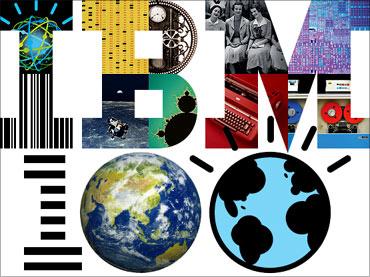
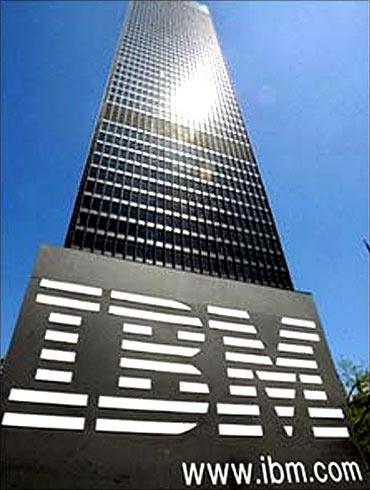
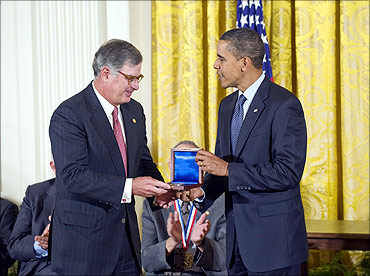


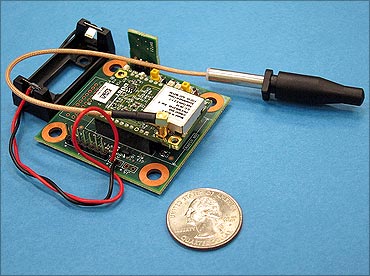
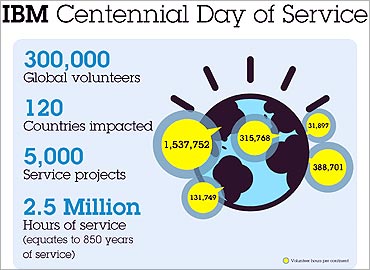
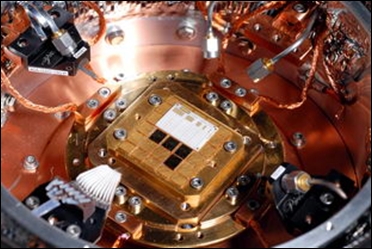
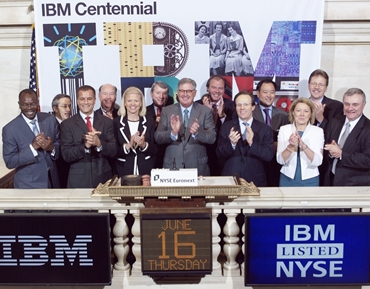

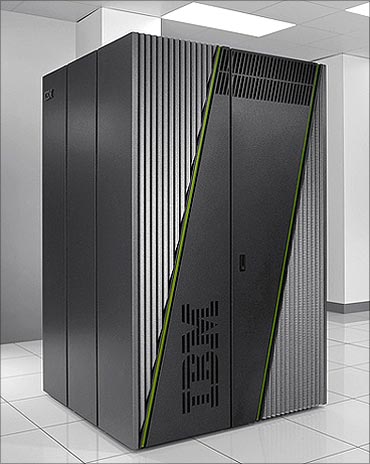


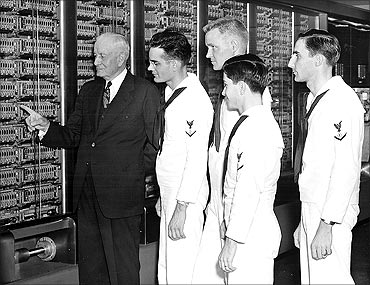

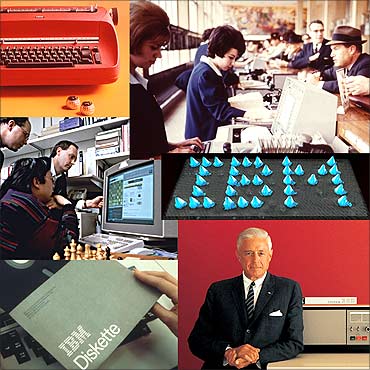
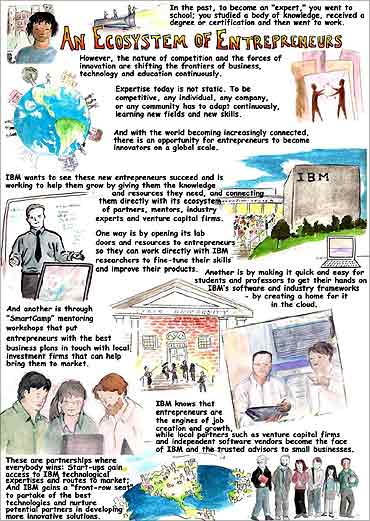
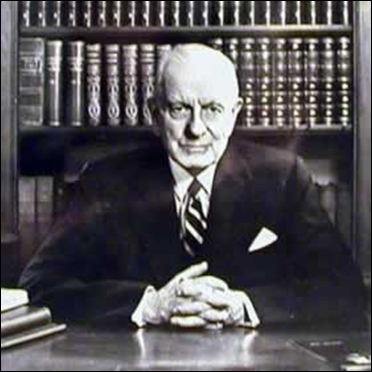

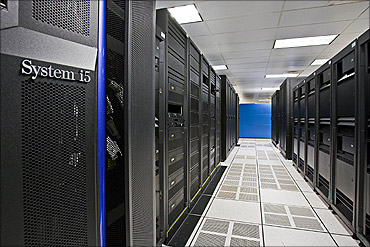
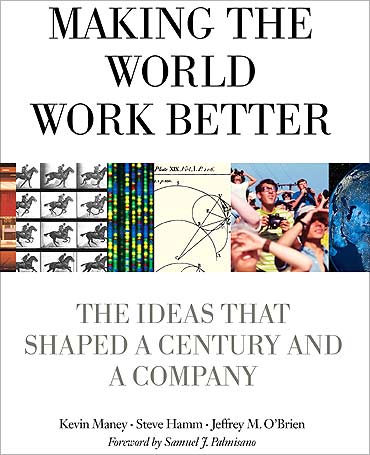


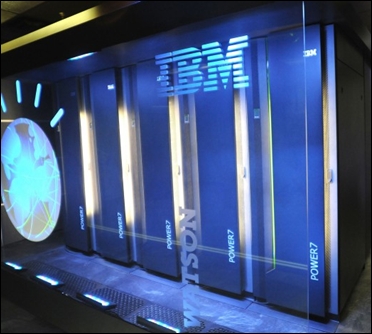

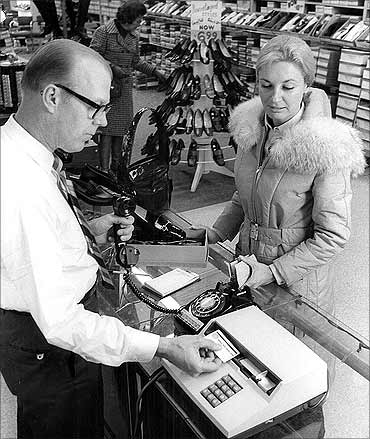
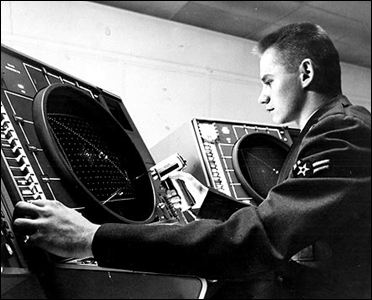
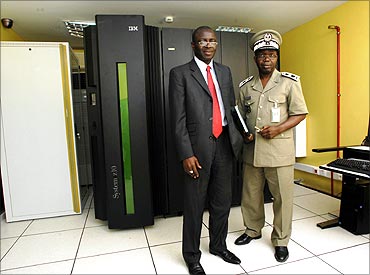
article